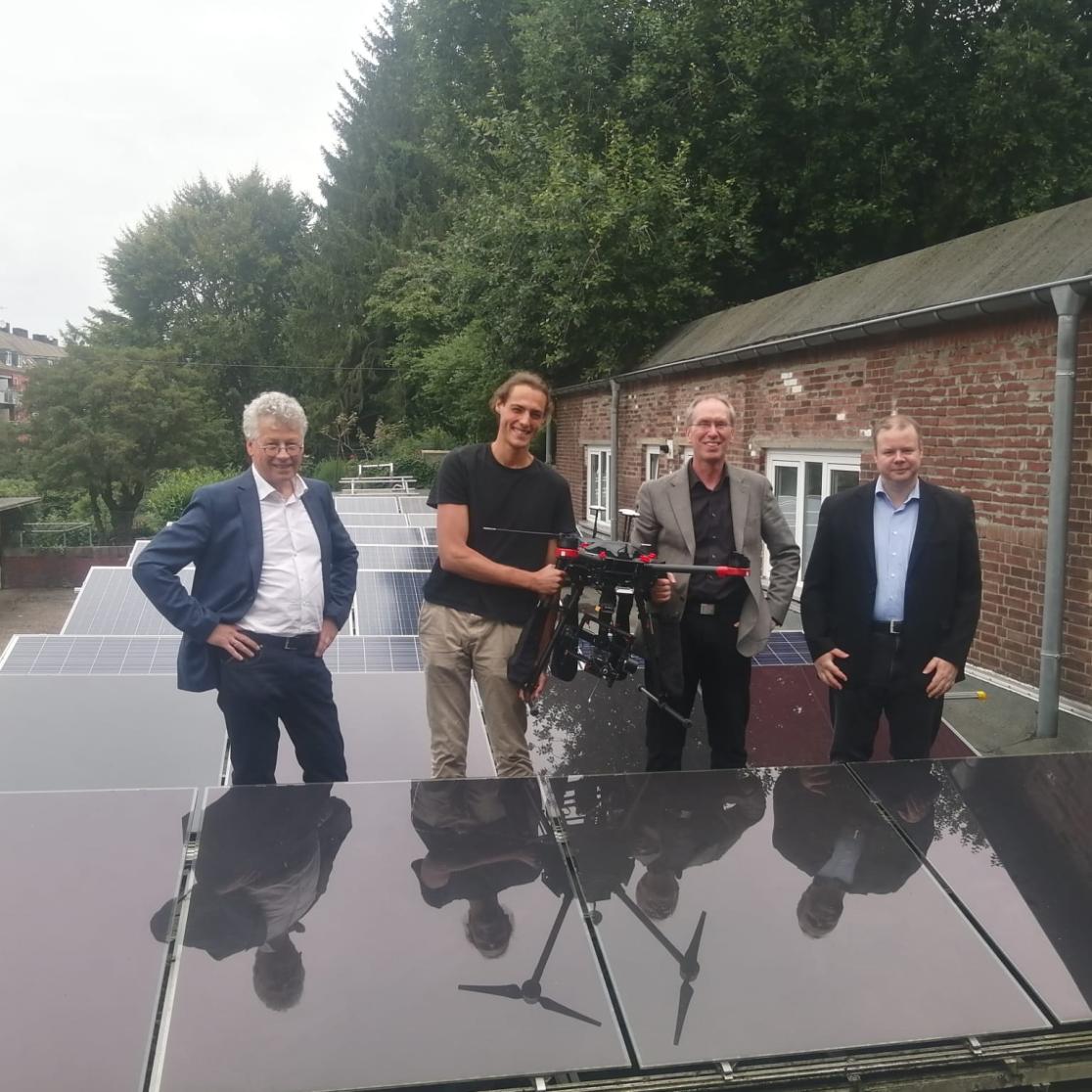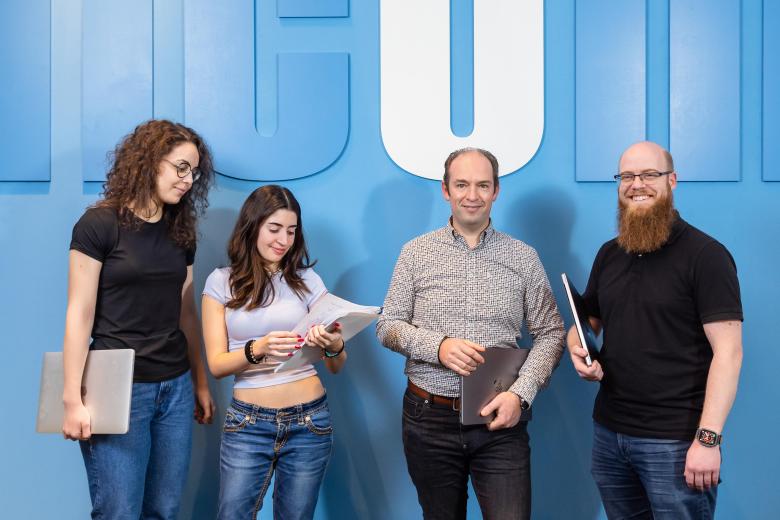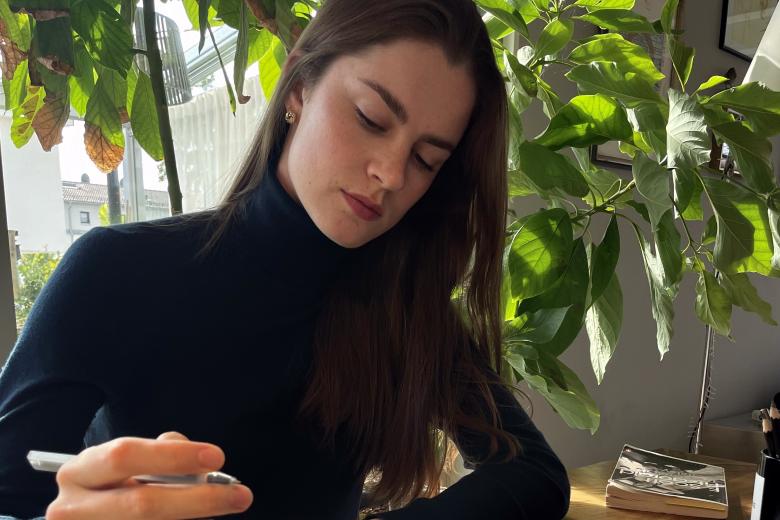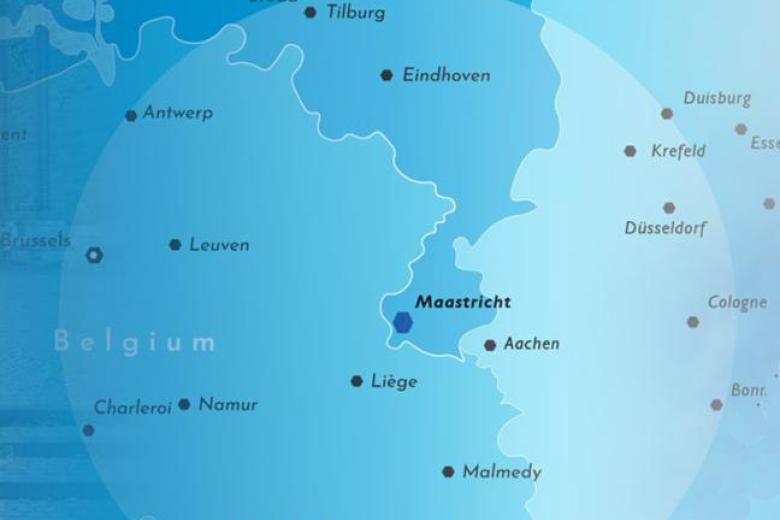Knowledge (Engineering) at Work
At FSE’s bachelor’s programme Data Science and Artificial Intelligence, KE@Work (Knowledge Engineering at Work) offers real-world challenges for high-performing students, bright minds for companies, synergies between UM and industry as well as ways to keep international top talent in the region.
Frank Thuijsman started teaching at the Department of Advanced Computing Sciences when it was still the department of Mathematics in 1987. Entrepreneurially minded as he is, he noticed a concerning trend over the years. “Students would only experience companies when they wrote their thesis – often the company would be excited about the project and wanted to continue but the students would prefer to travel after their studies or move elsewhere…”
At the same time, there were always students looking for challenges outside the programme. “Many of them write apps as a hobby, then they start their own business and if it goes well, they leave the study programme. Some of them might come back years later because they want to get a deeper understanding of the science. So I thought: why not offer the excitement they’re looking for – but then in an organised way, fully integrated into the studies?”
Thuijsman took EUregional inspiration from Aachen University of Applied Sciences. “They offer a dual programme that combines study and work. The programme is structured in such a way that a German company can offer students a three-year employment contract. That’s obviously attractive and they managed to double the number of students with that construction.”
Allowing honours students enough flexibility to accommodate substantial time would of course require quite a bit of tweaking. “Obviously, I wouldn’t have been able to persuade my colleagues to change the structure of my programme for just one company.” And so Thuijsman got in touch with Regitel, an umbrella organisation of then around 40 regional and multinational IT companies.
The right time, the right place
“I gave a presentation at a member meeting convened for the occasion in Aachen. That would allow them to see how it works and how successful it can be. Companies started telling me they would be happy to participate that same evening.” Soon Thuijsman had been offered around 15 projects – enough to justify a change in the structure of the programme.
Accommodating the new honours programme wasn’t straightforward. “In mathematics and computer science, we don’t do PBL because it’s not well-suited to the subject matter. Instead, we have Project-Centred Learning, where small teams of students work on a semester-long challenge that exceeds the academic scope of the courses. Actually we had already collaborated with companies for that, but it was difficult to find really challenging problems that would neatly fit into one semester.”
Students of the honours programme would use the time saved on group projects to work in a company instead. “All courses are now on Monday, Tuesday and Friday. That gives them two full days to work at the company while attending courses and full-time in other parts of the year.” This effectively means that honours students divide their time equally between courses and their company project across two years.
“Of course that means they’ll have to spend evenings to prepare for courses. It comes down to more or less an extra day per week,” explains Thuijsman, “but many students end up doing that anyway if they work a job on the side.” During exam weeks, students are off company duty to dedicate all their time to studying.
The standardised internship contracts for two years stipulates that honours students get paid for their work, as does the department. “It’s a three-party contract: so not just the student and the company like in a regular internship, but also us for the academic supervision. We give students 36 ECTS credits for this, so it had better be of very high quality! We’re talking about research projects on proofs of concept rather than just applying existing technology.”
Finding the right fit
The participating companies write a one-page project description while students prepare standardised CVs. During a pitch event, the companies get to present their proposed project for five minutes each. “After that, people can mingle during drinks, people can get to know each other, also the representatives from the companies – this is also a really good networking event both for students and companies.”
Students then make a list ranking the projects according to their preferences. During a second event, the companies get half an hour to present their proposal in more detail in front of only the students who have indicated interest but not their industrial competitors. After ten-minute interviews with each of the interested students, companies create their preference list. Students are then offered projects in that order but can of course choose to pick other projects instead.
Thuijsman has created a scheme that benefits everyone. “I offer the company smart students and ask them to come up with an interesting problem to solve.” Students should have at least a 7.5 Grade Point Average, be original thinkers and show high motivation.
KE@Work pays for itself and now has a full-time employee in Claire van Doorn, who monitors all KE@Work students, coordinates the selection and matching procedures as well as all being in charge of administration and keeping track of alumni to see what the programme does for the local economy. Impressively, for a programme with almost 80% non-Dutch students, almost half of the graduates stay in the Netherlands to start their career.

KE@Work visiting Aerial PV Inspection
Winners all round
The success stories have spread and more companies are now approaching Thuijsman. “We now have more projects than students, so I sometimes have to disappoint people.” There are, however, more ways to cooperate within the growing KE@Work network. “We can ask master’s students to start projects or think about PhD projects. We can also design research lines together or jointly apply for research grants from for example NWO or ERC. We recently established such a collaboration with VDL Nedcar for four PhD positions. In this way, KE@Work generates long-term cooperation between our department and regional businesses and organizations.”
KE@Work also benefits the curriculum. “We get feedback from companies about what is relevant now – and usually we’re adding some electives to our programme to make sure graduates are ideally prepared for what’s out there. I want students to know what kind of problems need solving and I want companies to know what we can do for them. I know what my students and colleagues are capable of – I’ve seen so many examples of this in the past years.”
Thuijsman can look back on a host of impressive results, from using machine learning to predict the exact energy needs of Team Jumbo-Visma’s professional cyclists to predicting the profitability of parking facilities using large data sets, to augmented reality glasses for surgeons that colour-code different tissues operated on to clearly distinguish nerves, muscle, etc. With over 150 projects launched before and more than 30 about to start, the list of successes will only continue to grow.
Text: Florian Raith
Also read
-
Companies unlock Maastricht University’s hidden talent
@Work students serve as a bridge between academia and industry, helping companies recognise the university’s strengths. “We’re a hidden gem that’s gradually being discovered, as more and more people learn that we are one of the largest academic data science and AI programmes in the Netherlands
-
If a machine can write a flawless essay, what’s left for the writer?
UCM graduate Robin van Wasen traces how writing has shaped her learning, identity, and voice, and asks whether AI, despite its fluency, can ever replace the intent, authenticity, and connection that define human writing.
-
DigiMach places Meuse-Rhine Euroregion at the heart of industrial digitalisation
DigiMach (Digital Machining) is a new cross-border project uniting Belgium, Germany, and the Netherlands around a common goal: accelerating the digitalisation of the machining industry in the Meuse-Rhine Euroregion.